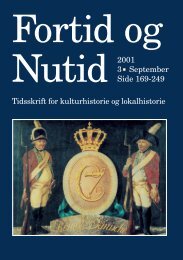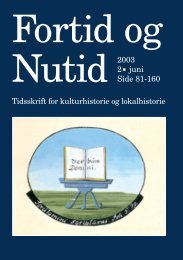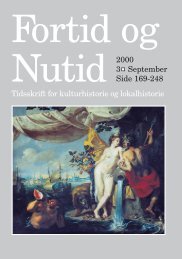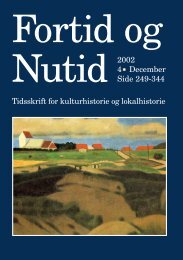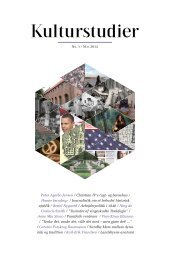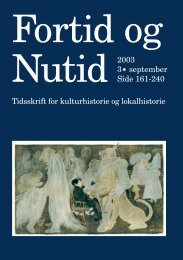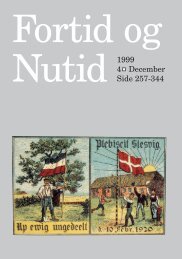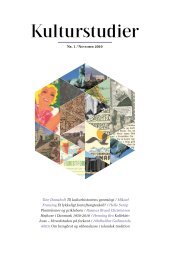Læs hele tidsskriftet (PDF) - Kulturstudier
Læs hele tidsskriftet (PDF) - Kulturstudier
Læs hele tidsskriftet (PDF) - Kulturstudier
You also want an ePaper? Increase the reach of your titles
YUMPU automatically turns print PDFs into web optimized ePapers that Google loves.
<strong>Kulturstudier</strong> Nr. 2, 2011 Kroppens politiske økonomi 21/21<br />
Taylor, James 2005: Stakes and kidneys. Why markets in human body parts are<br />
morally imperative. Ashgate, Hampshire.<br />
Titmuss, Richard 1997: The Gift Relationship. From Human Blood to Social Pol-<br />
icy. The New Press, New York.<br />
Turner, Victor 1967:” Betwixt and Between: The Liminal Period in Rites de Pas-<br />
sage”.The forest of symbols. Aspects of Ndembu Ritual, s. 93-111.<br />
Waldby, Catherine & Robert Mitchell 2006: Tissue Economies. Blood, Organs,<br />
and Cell Lines in Late Capitalism. Duke University Press.<br />
Wilkinson, Stephen 2003: Bodies for sale. Ethics and exploitation in the human<br />
body trade. Routledge.<br />
Wolfe, Cary 2010: What is posthumanism? University of Minnesota Press.<br />
Wolputte, Steven van 2004: “Hang on to Your Self: Of Bodies, Embodiment, and<br />
Selves”. Annual Review of Anthropology, 33, s. 251-269.<br />
The Political Economy of the Body. Drawing the Frontier between<br />
Individual, Body and Commodity in Medical Development systems<br />
Today, the medico industry is considered the largest export sector of Denmark,<br />
and the medical knowledge, on which it is based, requires access to bodies and<br />
human biological material. This material and these bodies are thus in a certain<br />
sense economic resources. At the same time, they are typically regarded as parts<br />
of individuals – of subjects. In certain situations, this duality becomes problematic.<br />
You cannot buy and sell “body parts”; individuals may own, but cannot<br />
be owned. It is, however, no easy task to keep the-body-as-subject separate from<br />
the-body-as-object, and the medical routine work is full of hybrids. In the present<br />
article, we discuss historically specific ways in which to create distinctions in<br />
the tension between being a patient who is the target for intervention, and supplying<br />
material for the treatment of others. We focus on the hip as a bone and as<br />
a metal prosthesis, where it becomes the subject of exchange. With the article, we<br />
specifically wish to underline the necessity of recognizing the basic ambiguity<br />
sourrounding the body, and the meaning of this ambiguity for how we organize<br />
the exchange of everything which is neither subject nor an unambiguous object.<br />
177



